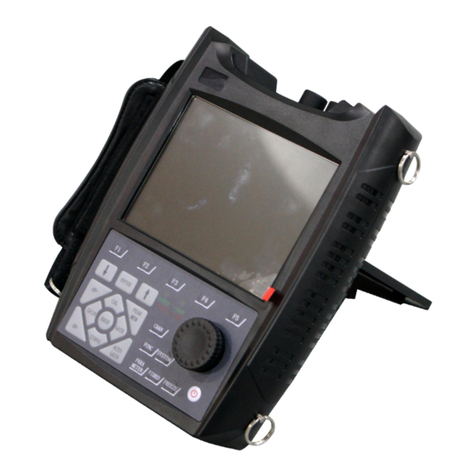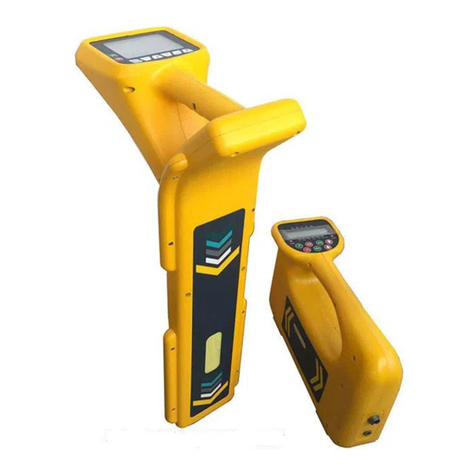
V.HZJF-9011D Description Of Front Panel And Rear
Panel Components
1. Touch screen: display the measured PD waveform, PD, test voltage, test frequency
and other parameters;
2. Power switch button: press once to turn on; press again to turn off;
3. Partial discharge input: partial discharge measurement signal input, HZJF-9011D
single channel, signal can be connected from any channel;
4. High voltage voltage divider, voltage range: 150V;
5. Grounding bolt: reliable grounding is required during test;
6. RS232 port: through this serial port, the parameters of partial discharge instrument can
be uploaded to other equipment;
7. External power supply input;
VI.Operating Instructions
(1)Preparation test
1. Check the grounding condition of the test site. Connect the grounding bolt 5 at the back
of the instrument with the grounding wire of the test site with thick copper wire (preferably
braided copper tape). The grounding short circuit piece of the input unit should also be
properly grounded.
2. According to the size of the test capacitor CX coupling capacitance CK, select the
suitable serial number input unit. In Table 1, the tuning capacitance refers to the
equivalent capacitance seen at the two ends of the primary winding of the input unit
(which can be roughly estimated by the series value of CX and CK).
The input unit should be as close as possible to the tested object. The Q9 socket of the
input unit is connected to the amplifier input socket 3 (channel 1) on the back panel of the
instrument through an 8-meter long cable.
3.There are several methods to connect the sample to the input unit (see Figure 3).
































